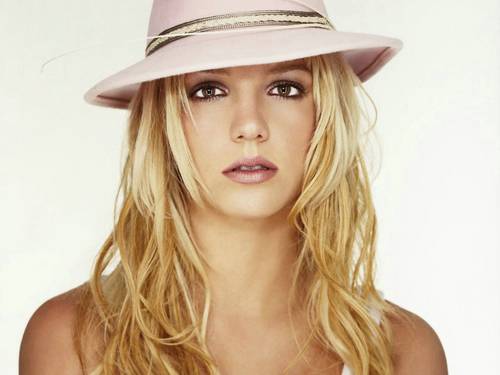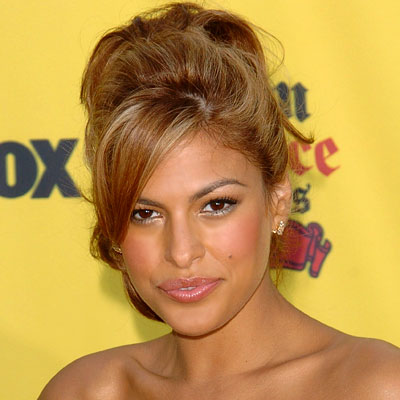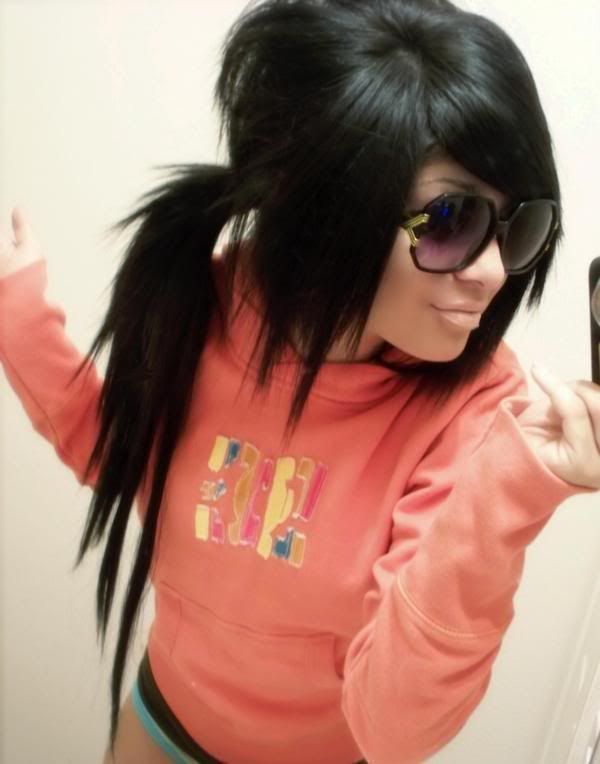Cine Actress Hot Photos Biography Source :- (Google.com)






 Hairstyles For Brides
Hairstyles For Brides
 Hairstyles For Brides
Hairstyles For Brides






 Hairstyles For Brides
Hairstyles For Brides

 Hairstyles For Brides
Hairstyles For Brides
Middle-class hairstyles tend to be understated and professional. Middle-class people aspire to have their hair look healthy and natural, implying that they have the resources to live a healthy lifestyle and take good care of themselves. Adult middle-class women typically wear their hair shoulder-length or shorter, favouring brunette or soft blonde colours. Their hair is styled to accommodate a professional identity, avoiding strong colours or extremes of any kind.Historically, working-class people's haircuts have tended to be practical and simple. Working-class men have often shaved their heads or worn their hair close-cropped, and working-class women have typically pulled their hair up and off their faces in simple styles. However, today, working-class people often have more elaborate and fashion-conscious hairstyles than other social classes. Many working-class Mexican men in American cities wear their hair in styles like the Mongolian (shaved except for a tuft of hair at the nape of the neck) or the rat tail (crewcut on top, tuft at the nape), and African-Americans often wear their hair in complex patterns of braids and cornrows, fastened with barrettes and beads, and sometimes including shaved sections or bright colour. Sociologists say these styles are an attempt to express individuality and presence in the face of social denigration and invisibility.
tage culture of the late 1950s and early 1960s that includes antique cars, hot rods, American folk music, rockabilly bands, Little Richard, and Elvis Presley.
There are Latin variants of the hair style more associated with European and Argentine tango fashion trends and occasionally with late 20th century musical genres such as rockabilly and country.
This style has become popular among Italian Americans and the "goombah" or "Guido" subculture. The style is often parodied in shows like The Sopranos, which portray stereotyped characters - especially Silvio Dante. Many Mexican Americans in the "Greaser" subculture also sport pompadours.[citation needed]
In modern Japanese popular culture, the pompadour is a stereotypical hairstyle often worn by gang members, thugs, members of the yakuza and its junior counterpart bosozoku, and other similar groups such as the yankii (high-school hoodlums). In Japan the style is known as the "Regent" hairstyle, and is often caricatured in various forms of entertainment media such as anime, manga, television, and music videos.
Conan O'Brien, American media personality and former host of Late Night with Conan O'Brien and Conan, is a notable wearer of the pompadour hairstyle.
Brent Liles of Social Distortion and Agent Orange wore a pompadour for many years.[citation neededRonald Reagan, the 40th President of the United States, sported a pompadour.[1]Singer, songwriter, Bruno Mars has also been seen sporting a pompadour.Styling products aside from shampoo and conditioner are many and varied. Leave-in conditioner, conditioning treatments, mousse, gels, lotions, waxes, creams, clays, serums, oils, and sprays are used to change the texture or shape of the hair, or to hold it in place in a certain style. Applied properly, most styling products will not damage the hair apart from drying it out; most styling products contain alcohols, which can dissolve oils. Many hair products contain chemicals which can cause build-up, resulting in dull hair or a change in perceived texture.
Care of human or other natural hair wigs is similar to care of a normal head of hair in that the wig can be brushed, styled, and kept clean using haircare products.
Synthetic wigs are usually made from a fine fiber that mimics human hair. This fiber can be made in almost any color and hairstyle, and is often glossier than human hair. However, this fiber is sensitive to heat and cannot be styled with flat irons or curling irons. There is a newer synthetic fiber that can take heat up to a certain temperature.
Human hair wigs can be styled with heat, and they must be brushed only when dry. Syntheticand human hair wigs should be brushed dry before shampooing to remove tangles. To clean the wig, the wig should be dipped into a container with water and mild shampoo, then dipped in clear water and moved up and down to remove excess water. The wig must then be air dried naturally into its own hairstyle.Proper maintenance can make a human hair wig last for many years.There are many options to adorn and arrange the hair. Hairpins, clasps, barrettes, headbands, ribbons, rubber bands, scrunchies, and combs can be used to achieve a variety of styles. There are also many decorative ornaments that, while they may have clasps to affix them to the hair, are used solely for appearance and do not aid in keeping the hair in place. In India for example, the Gajra (flower garland) is common there are heaps on hairstyles.
At most times in most cultures, men have worn their hair in styles that are different from women's. American sociologist Rose Weitz once wrote that the most widespread cultural rule about hair is that women's hair must differ from men's hair.[30] An exception is the men and women living in the Orinoco-Amazon Basin, where traditionally both genders have worn their hair cut into a bowl shape. In Western countries in the 1960s, both young men and young women wore their hair long and natural.[31] During most periods in human history when men and women wore similar hairstyles, as in the 1920s and 1960s, it has generated significant social concern and approbation.[32]
[edit]Religion
Cutting off one's hair is often associated with religious faith: Catholic nuns often cut their hair very short, and men who joined Catholic monastic orders in the eighth century adopted what was known as the tonsure, which involved shaving the tops of their heads and leaving a ring of hair around the bald crown.[31] Many Buddhists, Hajj pilgrims and Vaisnavas, especially members of the Hare Krishna movement, shave their heads. Some Hindu and most Buddhist monks and nuns shave their heads upon entering their order, and Korean Buddhist monks and nuns have their heads shaved every 15 days.[33] Adherents of Sikhism are required to wear their hair unshorn. Women usually wear it in a braid or a bun and men cover it with a turban.
In the 1800s, American women started wearing their hair up when they became ready to get married. Among the Fulani people of west Africa, unmarried women wear their hair ornamented with small amber beads and coins, while married women wear large amber ornaments. Marriage is signified among the Toposa women of South Sudan by wearing the hair in many small pigtails. Unmarried Hopi women have traditionally worn a "butterfly" hairstyle characterized by a twist or whorl of hair at each side of the face.
In many cultures, including Hindu culture and among the Wayana people of the Guiana highlands, young preople have historically shaved off their hair to denote coming-of-age. Women in India historically have signified adulthood by switching from wearing two braids to one. Among the Rendille of north-eastern Kenya and the Tchikrin people of the Brazilian rainforest, both men and women shave their heads after the death of a close family member. When a man died in ancient Greece, his wife cut off her hair and buried it with him,and in Hindu families, the chief mourner is expected to shave his or her head 10 days after a death.
Throughout history, hair has been a signifier of social class.Upper-class people have always used their hairstyles to signal wealth and status. Wealthy Roman women wore complex hairstyles that needed the labours of several people to maintain them,and rich people have also often chosen hairstyles that restricted or burdened their movement, making it obvious that they did not need to work.Wealthy people's hairstyles used to be at the cutting edge of fashion, setting the styles for the less wealthy. But today, the wealthy are generally observed to wear their hair in conservative styles that date back decades prior.
Middle-class hairstyles tend to be understated and professional. Middle-class people aspire to have their hair look healthy and natural, implying that they have the resources to live a healthy lifestyle and take good care of themselves. Adult middle-class women typically wear their hair shoulder-length or shorter, favouring brunette or soft blonde colours. Their hair is styled to accommodate a professional identity, avoiding strong colours or extremes of any kind.
Historically, working-class people's haircuts have tended to be practical and simple. Working-class men have often shaved their heads or worn their hair close-cropped, and working-class women have typically pulled their hair up and off their faces in simple styles. However, today, working-class people often have more elaborate and fashion-conscious hairstyles than other social classes. Many working-class Mexican men in American cities wear their hair in styles like the Mongolian (shaved except for a tuft of hair at the nape of the neck) or the rat tail (crewcut on top, tuft at the nape), and African-Americans often wear their hair in complex patterns of braids and cornrows, fastened with barrettes and beads, and sometimes including shaved sections or bright colour. Sociologists say these styles are an attempt to express individuality and presence in the face of social denigration and invisibility.Human hair wigs can be styled with heat, and they must be brushed only when dry. Syntheticand human hair wigs should be brushed dry before shampooing to remove tangles. To clean the wig, the wig should be dipped into a container with water and mild shampoo, then dipped in clear water and moved up and down to remove excess water. The wig must then be air dried naturally into its own hairstyle.Proper maintenance can make a human hair wig last for many years.There are many options to adorn and arrange the hair. Hairpins, clasps, barrettes, headbands, ribbons, rubber bands, scrunchies, and combs can be used to achieve a variety of styles. There are also many decorative ornaments that, while they may have clasps to affix them to the hair, are used solely for appearance and do not aid in keeping the hair in place. In India for example, the Gajra (flower garland) is common there are heaps on hairstyles.
At most times in most cultures, men have worn their hair in styles that are different from women's. American sociologist Rose Weitz once wrote that the most widespread cultural rule about hair is that women's hair must differ from men's hair.[30] An exception is the men and women living in the Orinoco-Amazon Basin, where traditionally both genders have worn their hair cut into a bowl shape. In Western countries in the 1960s, both young men and young women wore their hair long and natural.[31] During most periods in human history when men and women wore similar hairstyles, as in the 1920s and 1960s, it has generated significant social concern and approbation.[32]
Cutting off one's hair is often associated with religious faith: Catholic nuns often cut their hair very short, and men who joined Catholic monastic orders in the eighth century adopted what was known as the tonsure, which involved shaving the tops of their heads and leaving a ring of hair around the bald crown.[31] Many Buddhists, Hajj pilgrims and Vaisnavas, especially members of the Hare Krishna movement, shave their heads. Some Hindu and most Buddhist monks and nuns shave their heads upon entering their order, and Korean Buddhist monks and nuns have their heads shaved every 15 days.[33] Adherents of Sikhism are required to wear their hair unshorn. Women usually wear it in a braid or a bun and men cover it with a turban.Tage culture of the late 1950s and early 1960s that includes antique cars, hot rods, American folk music, rockabilly bands, Little Richard, and Elvis Presley.There are Latin variants of the hair style more associated with European and Argentine tango fashion trends and occasionally with late 20th century musical genres such as rockabilly and country.At most times in most cultures, men have worn their hair in styles that are different from women's. American sociologist Rose Weitz once wrote that the most widespread cultural rule about hair is that women's hair must differ from men's hair.[30] An exception is the men and women living in the Orinoco-Amazon Basin, where traditionally both genders have worn their hair cut into a bowl shape. In Western countries in the 1960s, both young men and young women wore their hair long and natural.[31] During most periods in human history when men and women wore similar hairstyles, as in the 1920s and 1960s, it has generated significant social concern and approbation.[32].here are Latin variants of the hair style more associated with European and Argentine tango fashion trends and occasionally with late 20th century musical genres such as rockabilly and country.
This style has become popular among Italian Americans and the "goombah" or "Guido" subculture. The style is often parodied in shows like The Sopranos, which portray stereotyped characters - especially Silvio Dante. Many Mexican Americans in the "Greaser" subculture also sport pompadours.[citation needed]
In modern Japanese popular culture, the pompadour is a stereotypical hairstyle often worn by gang members, thugs, members of the yakuza and its junior counterpart bosozoku, and other similar groups such as the yankii (high-school hoodlums). In Japan the style is known as the "Regent" hairstyle, and is often caricatured in various forms of entertainment media such as anime, manga, television, and music videos.
Conan O'Brien, American media personality and former host of Late Night with Conan O'Brien and Conan, is a notable wearer of the pompadour hairstyle.
Hairstyles For Brides
Hairstyles For Brides

Hairstyles For Brides
Hairstyles For Brides
Hairstyles For Brides

Hairstyles For Brides
Hairstyles For Brides
Hairstyles For Brides

Hairstyles For Brides

Hairstyles For Brides

Hairstyles For Brides
Hairstyles For Brides

Hairstyles For Brides
Hairstyles For Brides

Hairstyles For Brides


No comments:
Post a Comment